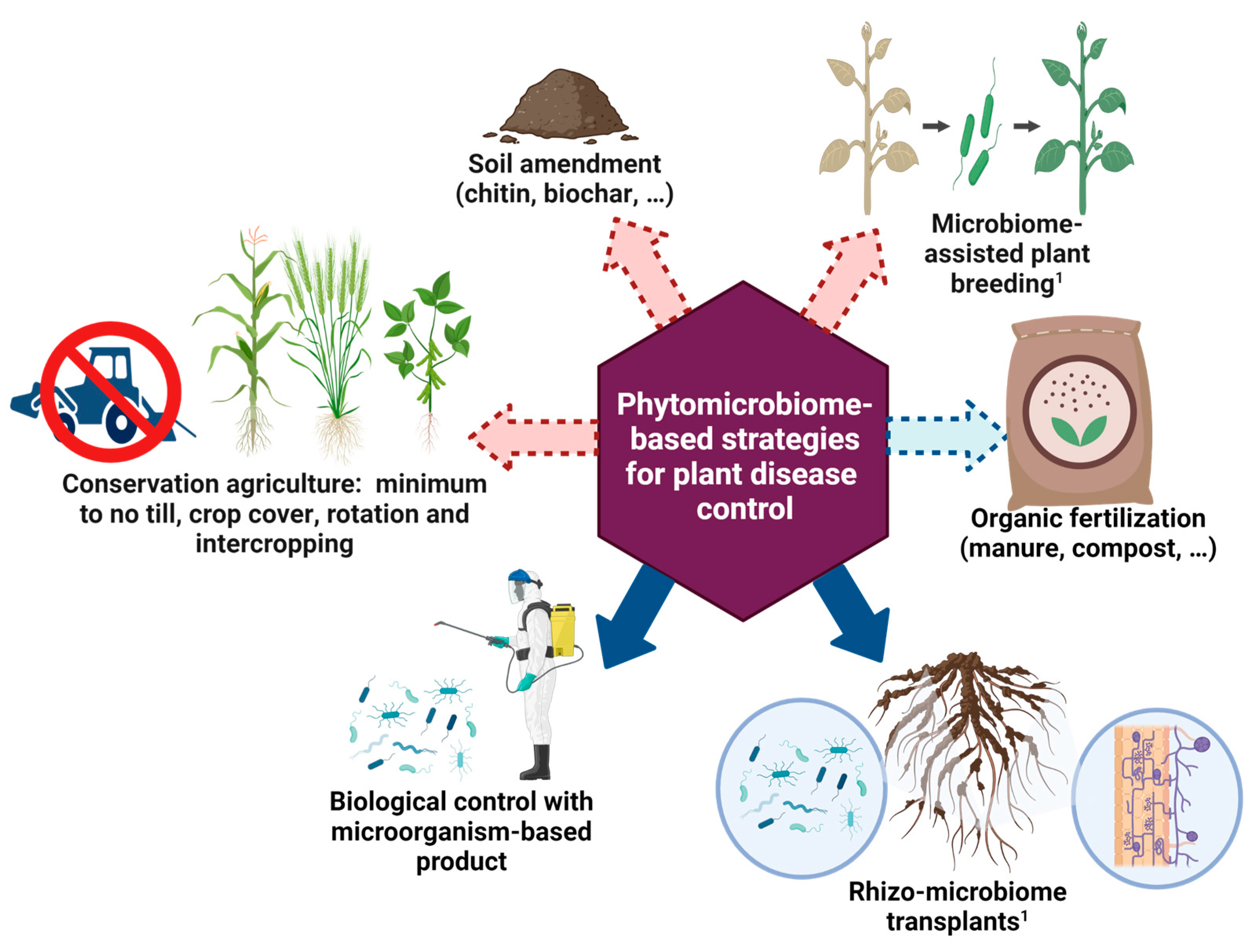Imagine walking into your garden, excited to see the fruits of your labor, only to find your crops looking sickly and unproductive. It’s a scenario that can frustrate even the most seasoned gardeners.
You might wonder what went wrong despite your diligent care. The culprit? Poor soil conditions that lead to crop diseases. These invisible attackers can devastate your harvest, but understanding their symptoms and prevention methods can turn the tide in your favor.
As you read on, you’ll discover how to identify signs of distress in your plants and learn practical steps to protect your crops from the ground up. This is your opportunity to empower yourself with knowledge that can save your garden and enhance your yields. Don’t let your hard work go to waste—let’s tackle crop diseases together, starting with the soil beneath your feet.

Common Crop Diseases Linked To Poor Soil
Poor soil often leads to a range of crop diseases. These diseases affect plant health and productivity. Understanding the link between poor soil and crop diseases is crucial. Farmers can take preventive measures. This section explores common crop diseases caused by inadequate soil conditions.
1. Fusarium WiltFusarium Wilt thrives in poorly drained soil. It causes yellowing and wilting of leaves. The disease blocks water and nutrient flow. Plants struggle to survive. This fungus is common in tomato and banana crops.
2. Root RotRoot Rot affects crops in wet soil. It causes roots to decay. Plants fail to absorb nutrients. Symptoms include stunted growth and wilting. Root Rot is prevalent in beans and peas.
3. Powdery MildewPowdery Mildew appears in dry, nutrient-poor soil. White powder spots cover leaves. It reduces photosynthesis. Leaves curl and die. Grapes and cucumbers often suffer from this disease.
4. Blossom End RotBlossom End Rot occurs in calcium-deficient soil. It affects tomatoes and peppers. Dark, sunken lesions form on fruit ends. The disease lowers fruit quality. Proper soil management can prevent it.
5. Leaf SpotLeaf Spot thrives in compacted soil. It creates brown spots on leaves. The disease spreads rapidly. It weakens plants. Corn and wheat are common victims. Regular soil aeration helps control it.
6. ClubrootClubroot targets crops in acidic soil. It causes swollen roots. Plants become stunted. They lose vigor. Cruciferous vegetables like cabbage are affected. Soil pH adjustment can reduce its impact.

Signs Of Soil-related Crop Diseases
Yellowing leaves, stunted growth, and wilting plants often indicate soil-related crop diseases. Poor drainage and nutrient imbalance worsen these symptoms. Regular soil testing and adding organic matter can help prevent these issues.
Understanding the signs of soil-related crop diseases is essential for any gardener or farmer. Poor soil conditions can lead to a myriad of issues, affecting not just the health of your plants but also your yield. By recognizing these signs early, you can take preventive measures to safeguard your crops. Let’s dive into some common indicators of soil-related crop diseases and how you can address them.Yellowing Leaves
One of the first signs you might notice is yellowing leaves. This often indicates a nutrient deficiency, particularly nitrogen. Yellowing can be patchy or affect entire leaves, signaling that your soil might lack essential nutrients. Adding compost or a balanced fertilizer can often rectify this problem. Regular soil tests can help you keep track of nutrient levels.Stunted Growth
If your plants aren’t growing as expected, poor soil might be to blame. Stunted growth is a common symptom of compacted or poorly draining soil. Consider aerating your soil to improve drainage and root access to nutrients. Raised beds can also help in areas with heavy clay soils.Wilting Plants
Plants that wilt even when adequately watered may have root issues. This can be due to soil-borne pathogens or poor soil structure. Improving soil health with organic matter can make a difference. Crop rotation and ensuring proper drainage can also reduce the risk of disease.Discolored Or Deformed Fruits
Soil-related diseases can cause fruits to become discolored or deformed. This could be a sign of viral or bacterial infections. Testing your soil for pathogens and maintaining hygiene can help prevent these issues. Ensure you use disease-free seeds and plants.Poor Root Development
If you notice that your plants have underdeveloped roots, poor soil might be the culprit. Compacted soil restricts root growth and nutrient uptake. Loosening the soil and adding organic matter can encourage better root development. Regular mulching can also maintain soil structure.Presence Of Fungi Or Mold
The appearance of fungi or mold on the soil surface is a clear sign of poor soil health. This often results from excess moisture or lack of air circulation. Improving drainage and reducing watering can help manage this issue. Ensuring adequate spacing between plants can also improve airflow. Are your crops showing any of these signs? What steps will you take to improve your soil health this season? Addressing soil-related crop diseases starts with understanding the symptoms and taking proactive measures. Your plants will thank you for it!Techniques For Detecting Soil Issues
Soil issues can lead to crop diseases, affecting plant health. Spotting symptoms early, like wilting or yellowing leaves, is crucial. Regular soil testing and using organic matter help prevent these issues and ensure healthy crops.
Detecting soil issues early can save your crops from devastating diseases. Many farmers overlook the importance of soil health, focusing instead on what they can see above ground. However, beneath the surface lies the root of many problems. By understanding and utilizing techniques for detecting soil issues, you can prevent crop diseases and ensure a bountiful harvest.1. Soil Testing Kits
Soil testing kits are affordable and easy to use. They give you immediate insights into soil pH levels and nutrient deficiencies. Have you ever wondered why your plants aren’t thriving despite regular watering and sunlight? A simple soil test might reveal the answer.2. Visual Inspection
Visually inspecting your soil can be surprisingly effective. Look for compacted soil, unusual colors, or signs of erosion. During my first gardening season, I noticed a patch of soil that was significantly darker. Upon closer inspection, I realized it was waterlogged, leading to root rot in that area.3. Monitoring Plant Health
Plants often give clues about what’s happening below ground. Yellowing leaves, wilting, or stunted growth can indicate poor soil conditions. Have you noticed a pattern of sickly plants in one part of your garden? It might be time to investigate what’s beneath the surface.4. Professional Soil Analysis
For more detailed insights, consider professional soil analysis. This service can provide comprehensive data on nutrient content, soil texture, and even potential contaminants. Although it might seem like an investment, understanding your soil’s exact makeup can save you time and money in the long run.5. Diy Soil Moisture Tests
Checking soil moisture is crucial for healthy plant growth. You can perform a simple DIY test by digging a small hole and feeling the soil with your fingers. Is it too dry or too wet? Understanding moisture levels helps you adjust your watering habits for optimal plant health.6. Watch For Pest Patterns
Certain pests are attracted to specific soil conditions. If you notice an increase in pest activity, it could be a sign of an underlying soil issue. Observing these patterns can help you identify and address the root cause before it escalates into a larger problem.These techniques can help you maintain healthy soil and prevent crop diseases. Are there other methods you’ve found effective in your own gardening or farming experience? Share your insights and help others cultivate healthier crops.

Strategies To Prevent Crop Diseases
Poor soil often leads to crop diseases, showing symptoms like wilting and stunted growth. Strategies such as improving soil quality and regular monitoring help prevent these issues effectively.
Crop diseases from poor soil are a farmer’s nightmare. Thankfully, there are practical strategies to keep those diseases at bay. Prevention is always better than cure, and understanding how to protect your crops can save you time, effort, and money. Let’s look at some effective ways to prevent these diseases and keep your soil healthy. By implementing these strategies, you can ensure that your crops remain robust and productive. ###Regular Soil Testing
Testing your soil regularly is crucial. It helps you understand the nutrient levels and pH balance. Knowing what’s lacking or excessive in your soil lets you make informed decisions about what to add or reduce. This simple step can prevent nutrient deficiencies that often lead to diseases. Have you tested your soil lately? ###Crop Rotation
Rotating crops is a time-tested method. Growing the same crop repeatedly can deplete soil nutrients and increase disease risk. By rotating crops, you disrupt the life cycles of pests and diseases. Different plants have different nutrient needs, so rotation balances soil health. Try changing your crop pattern each season to see the benefits. ###Use Of Organic Matter
Adding organic matter improves soil structure and nutrient content. Compost, manure, or green cover crops can enrich your soil. Healthy soil is less susceptible to diseases. These materials also promote beneficial microorganisms that keep harmful pathogens in check. Do you use organic matter in your fields? ###Proper Water Management
Water is vital, but too much or too little can harm your crops. Overwatering can lead to root rot and other diseases. Ensure your irrigation system distributes water evenly. Consider the weather and soil type when watering. Are you monitoring your watering practices effectively? ###Implementing Integrated Pest Management (ipm)
IPM is a balanced approach to pest control. It combines biological, cultural, and chemical tools to manage pests sustainably. Using natural predators and resistant crop varieties reduces reliance on chemicals. This approach maintains ecological balance and reduces disease outbreaks. How integrated is your pest management strategy? ###Maintaining Clean Equipment
Dirty tools can spread disease from one field to another. Regularly clean and disinfect your farming equipment. It might seem tedious, but it’s a crucial step in disease prevention. Ensuring your tools are clean protects your crops and your investment. Are your tools as clean as they should be? ###Encouraging Biodiversity
A diverse ecosystem can naturally keep diseases in check. Plant a variety of species around your fields. This diversity attracts beneficial insects and microorganisms that help control pests and diseases. It also enhances soil health. Do you encourage biodiversity on your farm? By taking these steps, you can significantly reduce the risk of crop diseases from poor soil. Each strategy is a small investment in the health and productivity of your land. What’s your next step in improving soil health?Conclusion
Preventing crop diseases starts with healthy soil. Recognize symptoms early. Yellow leaves or stunted growth indicate issues. Soil testing helps identify problems. Regular checks are essential. Address deficiencies promptly. Use compost to improve soil quality. Rotate crops to prevent disease buildup.
Choose disease-resistant plant varieties. Proper irrigation prevents waterlogging. Balanced fertilization supports plant health. Educate yourself on common diseases. Knowledge is powerful. Healthy soil means better crops. Protect your investment. Sustainable practices lead to long-term success. Farmers thrive with good soil management.
Maintain vigilance for thriving crops. Your efforts ensure a productive harvest. Keep your soil healthy, keep your crops healthy.


